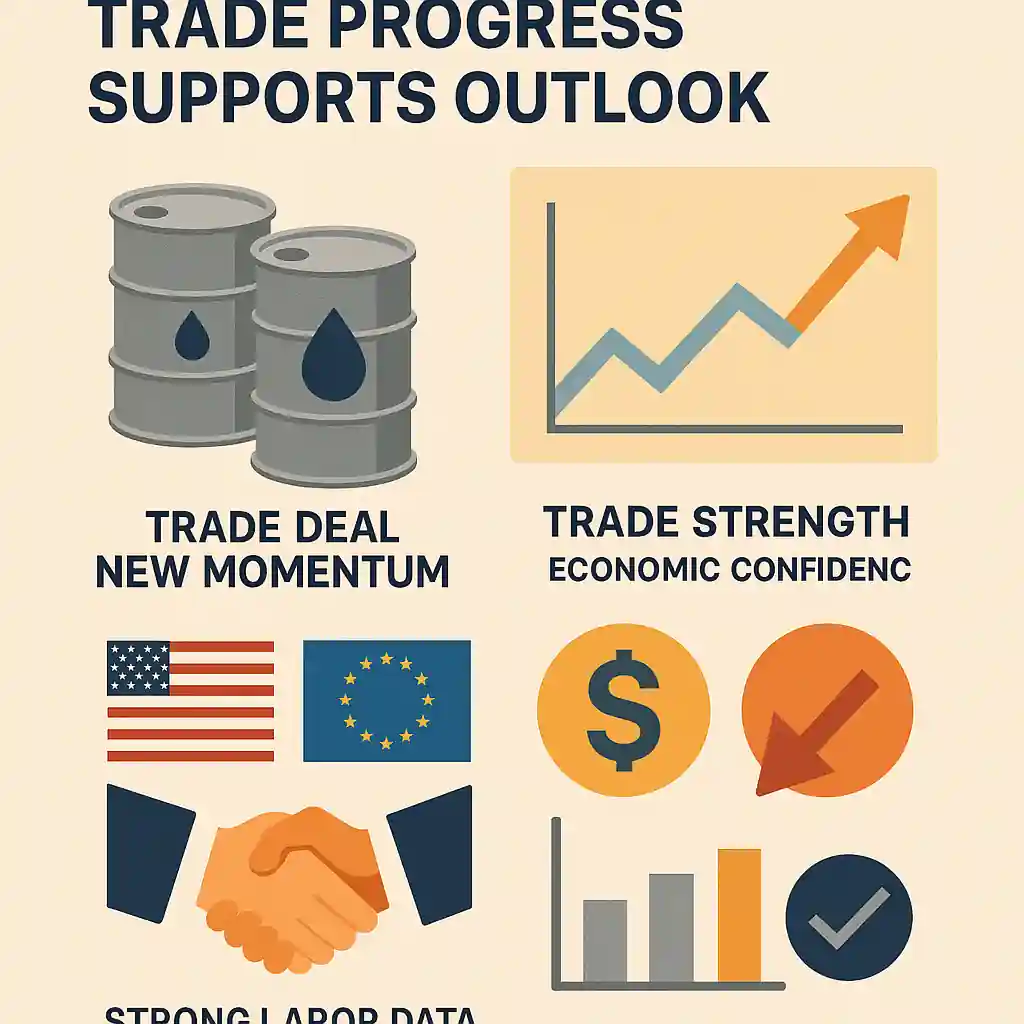Oil Prices Mixed as Trade Progress Supports Outlook
Oil prices traded mixed today, with September WTI crude up 1.12% while gasoline futures slipped nearly 0.7%. Crude oil found support from signs of improving trade relations and record-breaking U.S. stock market gains. Gasoline, however, continued to weaken on bearish refining margins.
Trade Deal Momentum Lifts Oil Sentiment
Optimism around trade boosted oil. The U.S. finalized a deal with Japan, while talks with the EU are reportedly nearing a conclusion. These developments helped oil rise, as improved trade relations suggest better global growth and higher energy demand.
Strong Labor Data Boosts Economic Confidence
Crude prices also benefited from a surprisingly low unemployment report. Weekly initial jobless claims fell by 4,000 to 217,000—a 3-month low—beating forecasts. This suggests labor market strength and supports the case for continued consumer and industrial oil demand.
Weak PMI and Crack Spread Cap Oil Gains
However, some headwinds limited oil’s upward move. The S&P U.S. manufacturing PMI fell to 49.5 in July, signaling contraction. Analysts had expected a much stronger reading of 52.7. This raised concerns about slower industrial activity and softer oil usage.
Also, today’s decline in the crude crack spread to a 2.5-week low hurt prices. A weaker spread discourages refiners from purchasing crude oil, reducing short-term demand. This trend continues to weigh on gasoline prices, which closed lower for the second day.
Kurdish Oil Exports to Resume, Pressuring Supply
Oil prices also faced pressure from Iraq’s move to resume crude exports from the Kurdish region via the Iraq-Turkey pipeline. Exports had been halted since March 2023. With Kurdistan now set to add 230,000 barrels per day to Iraq’s supply, markets are bracing for added volume.
As Iraq is OPEC’s second-largest producer, this increase contributes to global supply growth at a time when demand signals are mixed. Traders are closely watching to see how the market absorbs this expected output boost.
EU Sanctions on Russian Oil Offer Underlying Support
Last Friday, the EU approved a new round of sanctions targeting Russian oil. These measures included cutting 20 additional Russian banks off from SWIFT and blacklisting an Indian refinery co-owned by Rosneft. Sanctions now apply to over 400 Russian-linked ships, further constraining shadow fleet logistics.
Although not enough to spark a major rally, the sanctions provided a floor under oil prices by limiting the flow of Russian barrels to global buyers, particularly in the refined petroleum space.
Dollar Strength Adds Another Layer of Resistance
Today’s gains in the U.S. dollar created additional resistance for oil. A stronger dollar makes oil more expensive for holders of other currencies, which typically dampens buying interest. This factor helped cap crude’s intraday upside.
Oil Outlook Hinges on Trade, Refining Margins
Looking ahead, oil markets will continue to follow trade developments and refining margins closely. A breakthrough U.S.–EU agreement could lift sentiment further. However, persistent crack spread weakness and rising global supply could keep prices range-bound in the near term.







